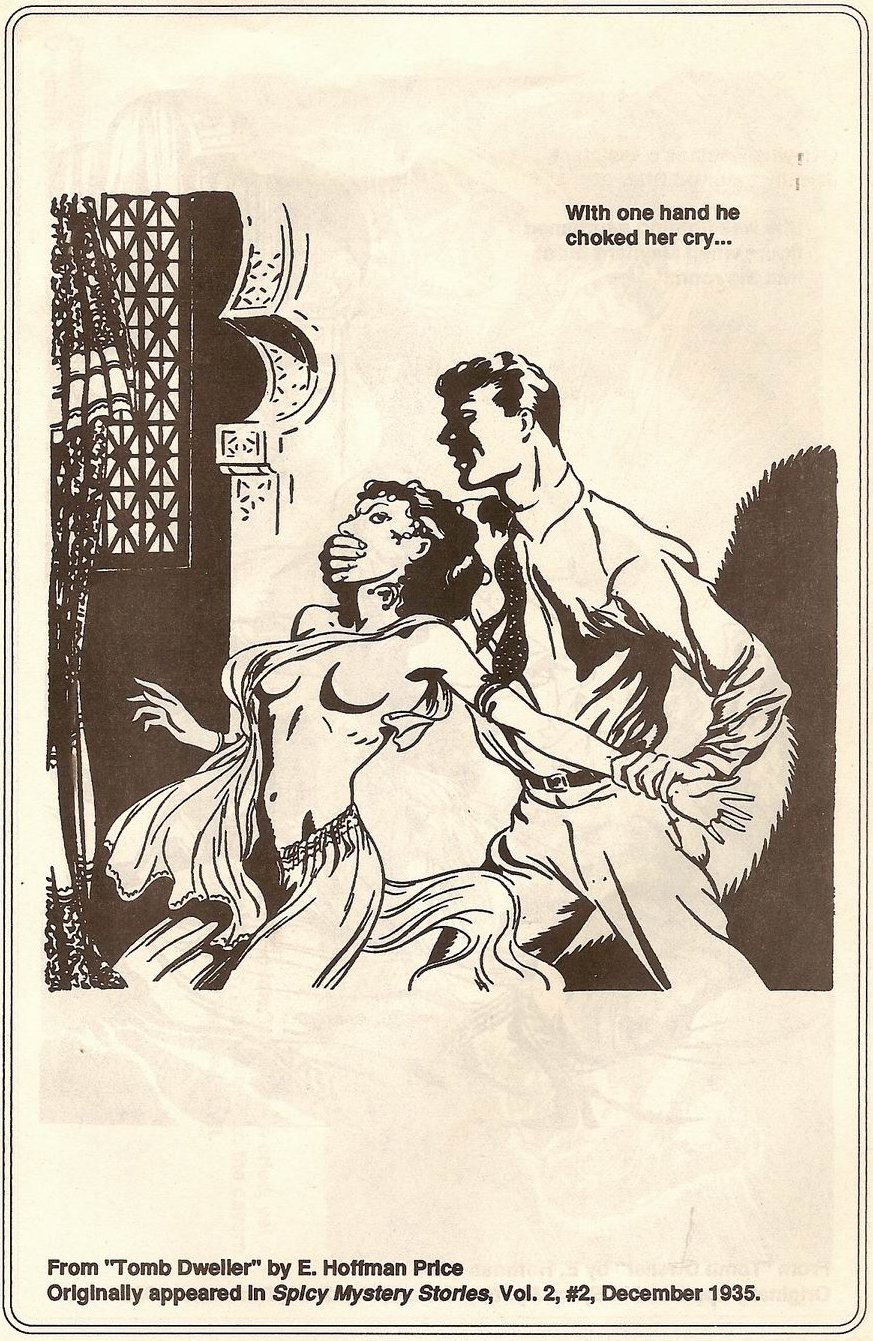[Editor’s note: When I first started posting pulp covers here at Erotic Mad Science, I noticed something unusual, which is is that beginning in the 1930s publishers were willing to put forth some remarkably — and to my dirty mind, enjoyably — lurid material on their covers. But this phenomenon of the “shudder pulps” got throttled back dramatically sometime around 1940. Many pulps just went plain out of business, and those that continued to publish did so with considerably tamer art. Puzzled at this phenomenon, I commissioned my friend Bacchus of ErosBlog, a man with a working Internet connection and a bulldog’s instincts wherever anything licentious might be found, to produce a research series on the question of why the shudder pulps faded so quickly. Bacchus’s extensive write-up of his discoveries will be running at mid-day here at Erotic Mad Science for the next few weeks, and I hope you all find it as enjoyable and informative as I did.
The blazing cometary arc of the shudder pulps is variously explained by different authors. Wikipedia, which along with some other authors prefers to call them “wierd menace” pulps, cites a definitive start date for the genre of 1933, but puts their demise in the “early 1940s”, attributing it to a vaguely-explained “censorship backlash.”

Other accounts have similar dates but offer more varied reasons. Blogger Todd Tjersland’s account of shudder pulp genesis is the standard one:
[T]he “Weird Menace” genre, a bizarre type of erotic horror story that was extremely popular in the 1930s, [was] hitting its peak between 1934-1937 and dying out by 1942. Weird Menace got its start in the pages of Popular Publications’ DIME DETECTIVE MAGAZINE (1933); brisk sales caused the genre to branch out into three “all weird menace, all the time” sister magazines: TERROR TALES (1934), HORROR STORIES (1935) and SINISTER STORIES (1940).
His account of their demise is also fairly standard:
Culture Publications legendary “Spicy” series…were considered so “hot” they had to be sold under the counter, often stripped of their lurid covers. … By the early 1940s, the “Spicy” line had become so notorious that it had trouble finding distribution thanks to censorship; Culture quickly changed the word “Spicy” in the title to “Speed” but it was a short-lived ruse that failed to save the line. Censorship (and the real life horrors of World War II) contributed to the decline and demise of Popular Publications’ weird menace titles around the same time.
If you would criticize Tjersland’s brief account for vagueness, do not; I selected it from among dozens precisely for its brevity. Any deficiencies in detail and citation it may have, it shares with other accounts that are more opinionated and much more lengthy; but for our purposes, it serves admirably. In a nutshell, it introduces the three main factors most often cited for the decline of risque pulps in general and the shudder pulps in particular:
- Censorship
- Distribution difficulties
- Changing popular tastes, due to the war or to the rise of alternative entertainments
However “censorship” and many distribution “distribution” difficulties collapse into a single factor upon consideration; official disapproval and legal sanction, after all, can be a big part of what makes it difficult to put magazines on newsstands where customers can buy them.
In addition, some authors have suggested additional factors, including:
- Wartime resource constraints on paper, labor, or printing supplies
- Easing of depression-era economic pressures that may have brought distribution partners such as newsstand owners into a more risque business than they were comfortable remaining in once business got better
The research has focused primarily on censorship, and the related distribution problems that are, as noted, too closely intertwined with it to be separated. The goal has been to get specific. What where the censorship pressures that the industry faced? Who went to jail? Whose doors had to close in the night? Where information supporting or debunking one of the other factors has come to light, it is noted; but the focus of effort has been on the censorship questions.
To be continued…
